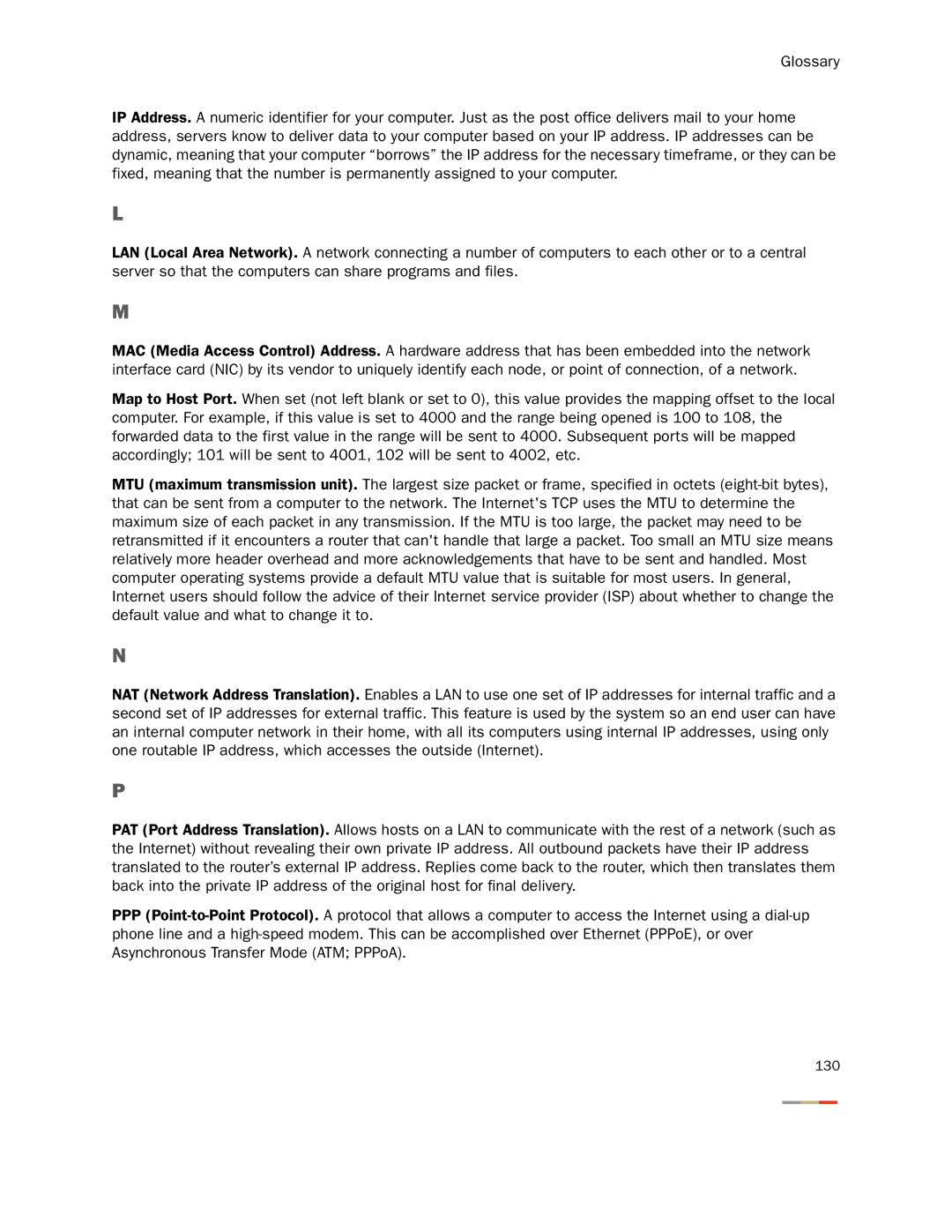Glossary
IP Address. A numeric identifier for your computer. Just as the post office delivers mail to your home address, servers know to deliver data to your computer based on your IP address. IP addresses can be dynamic, meaning that your computer “borrows” the IP address for the necessary timeframe, or they can be fixed, meaning that the number is permanently assigned to your computer.
L
LAN (Local Area Network). A network connecting a number of computers to each other or to a central server so that the computers can share programs and files.
M
MAC (Media Access Control) Address. A hardware address that has been embedded into the network interface card (NIC) by its vendor to uniquely identify each node, or point of connection, of a network.
Map to Host Port. When set (not left blank or set to 0), this value provides the mapping offset to the local computer. For example, if this value is set to 4000 and the range being opened is 100 to 108, the forwarded data to the first value in the range will be sent to 4000. Subsequent ports will be mapped accordingly; 101 will be sent to 4001, 102 will be sent to 4002, etc.
MTU (maximum transmission unit). The largest size packet or frame, specified in octets
N
NAT (Network Address Translation). Enables a LAN to use one set of IP addresses for internal traffic and a second set of IP addresses for external traffic. This feature is used by the system so an end user can have an internal computer network in their home, with all its computers using internal IP addresses, using only one routable IP address, which accesses the outside (Internet).
P
PAT (Port Address Translation). Allows hosts on a LAN to communicate with the rest of a network (such as the Internet) without revealing their own private IP address. All outbound packets have their IP address translated to the router’s external IP address. Replies come back to the router, which then translates them back into the private IP address of the original host for final delivery.
PPP
